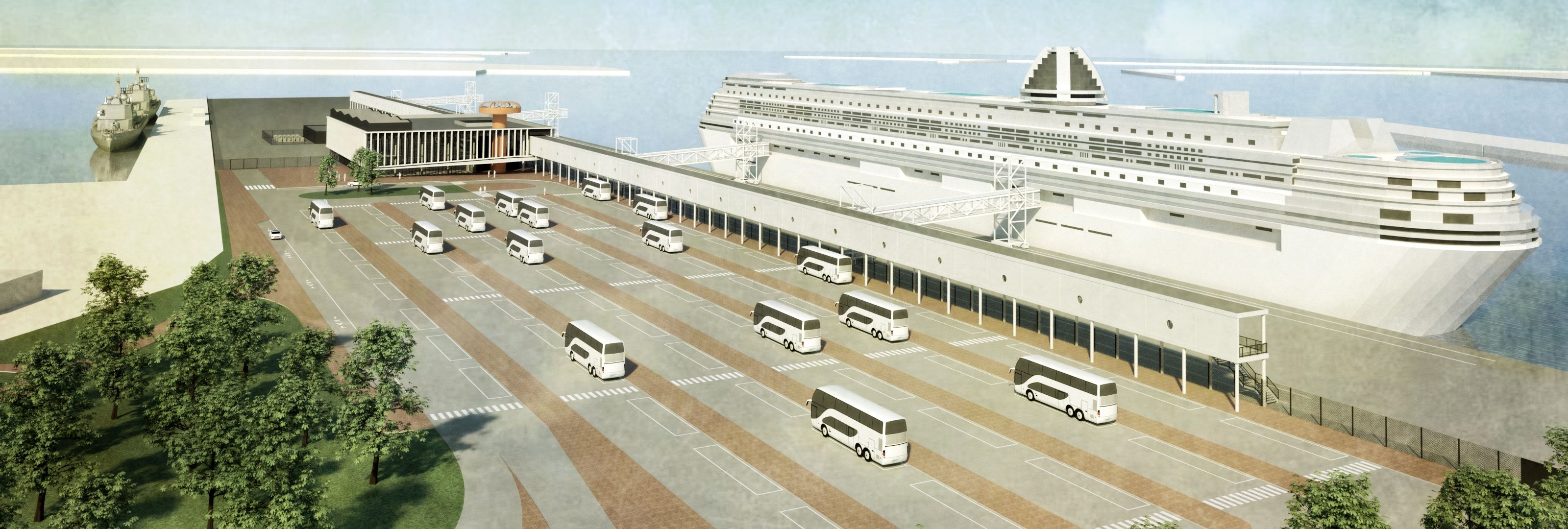New terminal building and shore power for cruises in Zeebrugge: transformation of Zweedse Kaai reduces emissions and noise pollution
Zweedse Kaai in Zeebrugge is on the eve of a major transformation. Antwerp-Bruges Port Authority announced today that it will modernise the quay's infrastructure: a plan that fits in with its ambition to be climate neutral by 2050. An important part of the plan is the introduction of shore power facilities, a first for cruise ships in Zeebrugge.
First step: shore power facilities
Zweedse Kaai will have the first shore power installation for cruise ships in Zeebrugge, allowing ships to switch to green electricity from the high-voltage grid at the quay. Eliminating the need for ships to run their diesel generators will reduce emissions of CO2 and particulate matter by 98% and 95% respectively. Work on the shore power installation is scheduled for the fall of 2025. By 2030, Port of Antwerp-Bruges plans to install shore power facilities for two cruise ships in Zeebrugge, the first of which should be operational in 2027. That's three years before the European obligation.
Quality of life as priority
In addition to the shore power facility, the Port Authority is also investing in new infrastructure to handle cruise ships. A new terminal building and redevelopment of the quay area should make the experience more pleasant for arriving and departing passengers and local residents, and improve connectivity with the hinterland. Buses are no longer required to take passengers from the ship to the terminal building (and back), creating a smoother flow for passengers and reducing the impact on the environment. The buses used to move passengers thereafter will run directly from the site via a new ramp on Kustlaan. The Port Authority's master plan transforms a stretch of the current quay into green space that is "given back" to the surrounding area. The old railway line is also being re-purposed with hiking and biking trails. Quality of life for the surrounding area is high on the agenda in the elaboration of the plan. At the same time, with an attractive connection to the residential area around Rederskaai, the project aims to make Zeebrugge itself more attractive to cruise tourists in order to stimulate local businesses.
The study for the new infrastructure will start in 2025, after which construction will take place in 2027-2028. The new terminal should be operational by spring 2029.
The Alternative Fuels Infrastructure Facility (AFIF) is providing a European grant of 3.2 million euros for the shore power facility. Additional grant opportunities for terminal modernisation are being explored.
Dirk De fauw, Mayor of Bruges and Vice Chairman of the Port of Antwerp-Bruges Board of Directors, said, "This master plan marks the beginning of an important new chapter for the port of Zeebrugge and the city of Bruges. The transformation of Zweedse Kaai not only encompasses advances in our infrastructure, but is also an important step towards a more sustainable future. The interests of local residents were actively considered in the development of the plan. Converting part of the terminal and the old railway line into green space with hiking and biking trails will boost both the quality of life in the area and the local economy."
Rob Smeets, COO of Port of Antwerp-Bruges said, "This project is all about preparing our port for the future. Our mission is clear: the Port of Zeebrugge must not only be an economic engine, but also a pioneer in sustainability and efficiency. The master plan for Zweedse Kaai does not focus on increasing capacity, but on improving efficiency and minimising impact on the environment. The planned infrastructure improvements are designed to optimise passenger flows and reduce inconvenience to local residents, contributing to a more sustainable and pleasant port environment."





